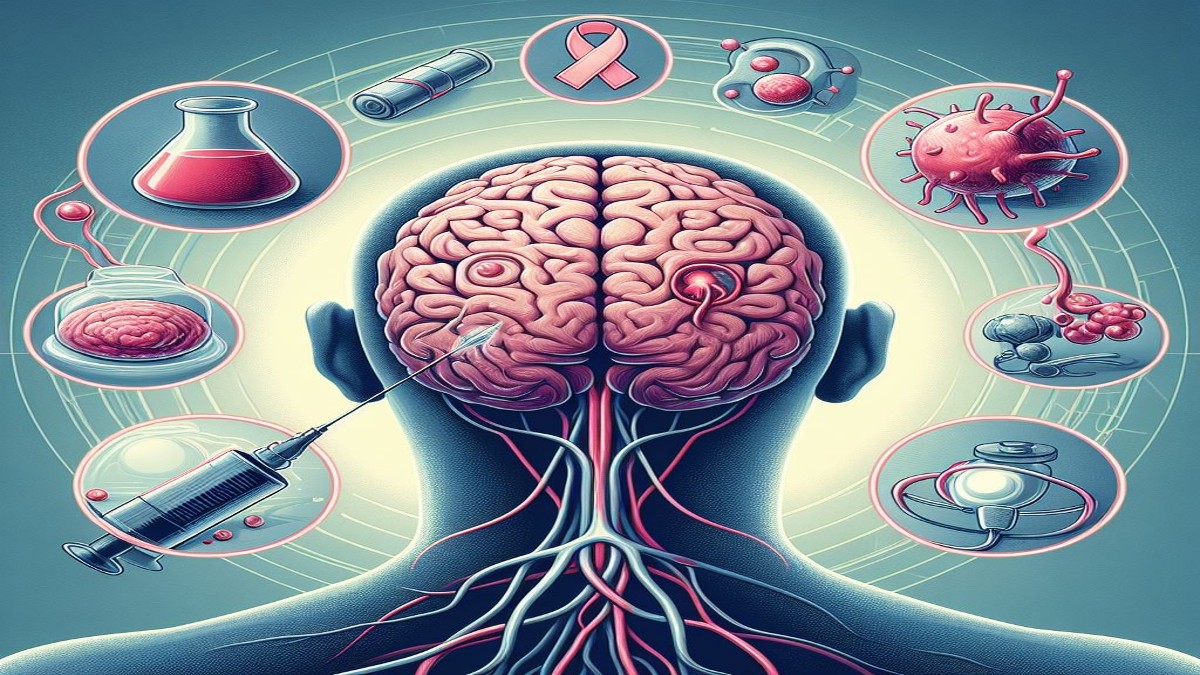
Neuroblastoma
Neuroblastoma, a rare but aggressive childhood cancer originating in immature nerve cells, poses significant challenges in terms of diagnosis and treatment. However, recent advancements in medical research have provided new insights into the mechanisms underlying neuroblastoma and potential therapeutic strategies.
This article explores the latest study that sheds light on neuroblastoma treatment, focusing on innovative approaches, promising therapies, and the implications for improving patient outcomes.
1. Understanding Neuroblastoma:
Before delving into the study’s findings, it’s crucial to understand the nature of neuroblastoma. Neuroblastoma arises from abnormal development of neural crest cells, primarily affecting infants and young children.
The cancer can manifest anywhere along the sympathetic nervous system, with tumors commonly originating in the adrenal glands, abdomen, chest, or pelvis. Neuroblastoma’s heterogeneous nature and variable clinical presentation pose significant challenges in terms of diagnosis, prognosis, and treatment planning.
2. The Study: Methodology and Objectives:
The study, conducted by a multidisciplinary team of researchers and clinicians, aimed to investigate novel therapeutic approaches for neuroblastoma treatment. Utilizing a combination of in vitro experiments, animal models, and clinical data analysis, the researchers sought to elucidate the molecular mechanisms driving neuroblastoma progression and identify potential targets for intervention.
The study’s objectives included evaluating the efficacy of existing treatments, exploring new treatment modalities, and identifying biomarkers for patient stratification and personalized therapy.
3. Molecular Insights into Neuroblastoma Pathogenesis:
One of the study’s key findings was the elucidation of molecular pathways underlying neuroblastoma pathogenesis. Through comprehensive genomic profiling and transcriptomic analysis, the researchers identified aberrant signaling pathways and genetic alterations associated with neuroblastoma development and progression.
These included mutations in genes such as MYCN, ALK, and PHOX2B, as well as dysregulation of cellular processes such as apoptosis, cell cycle regulation, and DNA repair.
4. Targeted Therapies and Immunotherapy:
Building on the molecular insights gained from their research, the study investigators explored targeted therapies and immunotherapy strategies for neuroblastoma treatment. Targeted therapies aimed to exploit specific vulnerabilities in neuroblastoma cells, such as inhibiting aberrant signaling pathways or targeting surface antigens expressed on tumor cells.
Immunotherapy approaches, including chimeric antigen receptor (CAR) T-cell therapy and immune checkpoint inhibitors, sought to harness the patient’s immune system to recognize and eliminate cancer cells.
5. Combination Therapies and Treatment Optimization:
Recognizing the complex and heterogeneous nature of neuroblastoma, the study investigated combination therapies and treatment optimization strategies to enhance therapeutic efficacy and minimize treatment resistance. By combining targeted agents with conventional chemotherapy, radiation therapy, or other novel agents, the researchers aimed to synergistically target multiple pathways involved in neuroblastoma pathogenesis. Additionally, efforts were made to optimize treatment protocols, dosing regimens, and treatment sequencing to maximize therapeutic benefit while minimizing toxicity and adverse effects.
6. Biomarker Discovery and Patient Stratification:
An essential aspect of the study was the discovery of biomarkers for patient stratification and personalized therapy. By identifying molecular signatures associated with treatment response, disease progression, and patient outcome, the researchers aimed to tailor treatment strategies to individual patients’ unique molecular profiles.
Biomarker-driven approaches enable more precise and effective treatment selection, leading to improved outcomes and reduced treatment-related morbidity.
7. Translational Research and Clinical Trials:
The study’s translational research component focused on translating laboratory findings into clinical applications through well-designed clinical trials.
Collaborating with clinical investigators and pharmaceutical partners, the researchers initiated clinical trials to evaluate the safety, efficacy, and tolerability of novel therapeutic agents in neuroblastoma patients. These trials employed innovative trial designs, such as basket trials, umbrella trials, and adaptive designs, to expedite drug development and maximize patient benefit.
8. Challenges and Future Directions:
Despite significant progress, the study encountered several challenges and identified areas for future research. This included overcoming treatment resistance, addressing tumor heterogeneity, optimizing drug delivery, and mitigating off-target effects.
Additionally, ongoing efforts are needed to further elucidate the molecular mechanisms driving neuroblastoma progression and identify additional therapeutic targets. Collaborative initiatives, interdisciplinary approaches, and increased funding support are essential for advancing neuroblastoma research and improving patient outcomes.
9. Clinical Impact and Patient Perspectives:
The study’s findings have significant clinical implications for neuroblastoma treatment and patient care. By elucidating novel therapeutic targets and treatment strategies, the study offers hope for improved outcomes and quality of life for neuroblastoma patients.
Moreover, patient advocacy groups and patient-centered initiatives play a crucial role in raising awareness, providing support, and advocating for access to innovative treatments and clinical trials.
Conclusion:
In conclusion, the latest study on neuroblastoma treatment represents a significant milestone in the ongoing battle against this devastating childhood cancer.
Through molecular insights, targeted therapies, and personalized medicine approaches, researchers are making strides towards more effective and less toxic treatments for neuroblastoma patients.
By combining scientific innovation with clinical expertise and patient-centered care, we can continue to advance the field of neuroblastoma research and ultimately improve outcomes for patients and families affected by this challenging disease.





Great post! I’m looking forward to reading more of your work.